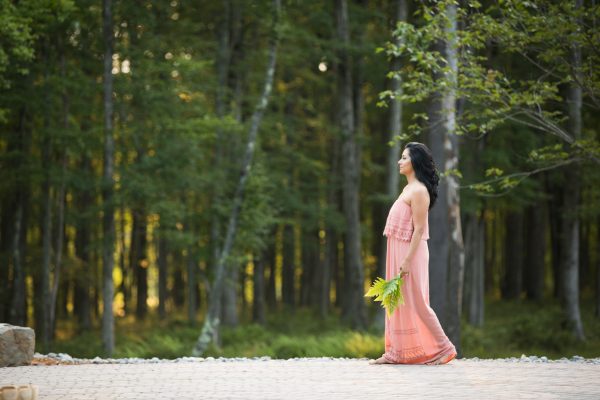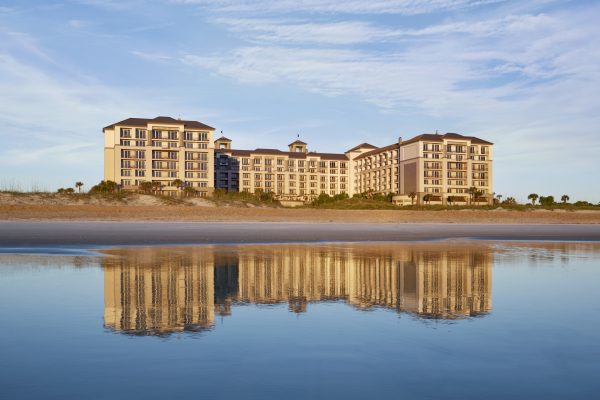Last updated May 21, 2024
I’m standing in the sunshine gazing over San Javier’s Nuevos Conquistadores on the northern edge of Medellin. Referred to as the City of Eternal Spring for its temperate weather, Medellin is the second-largest city in Colombia. And one that is lush with tropical plants, creating numerous and beautiful green corridors.
I can hear the distant sounds of traffic, breaking the laid-back quiet on a weekday morning as my community-based tourism group walks single file up a hill to a wood platform. In a nearby field, two cows graze on the lush, green grass. Small, colorful houses line the narrow road that winds toward the valley’s bottom, where an occasional motorbike stirs up dust.

Community-Based Tourism
I’m beginning my Afro Tour with Impulse Travel in San Javier, also known as Comuna 13, one of 15 comunas or districts of Medellin. Ana, our translator, and Freddie, a local musician, grew up here. The duo leads our small community-based tour group down communal staircases and along dirt footpaths through the residential areas of El Corazon, Independencias and El Salado, stopping to share stories.
This new community-based tour showcases an evolving Medellin, one that was once known as the murder capital of the world and the epicenter of cocaine trafficking, glorified in the recent Netflix series Narcos.




But Comuna 13 is now a thriving example of community-based tourism, defined as being owned, led and run by communities. And this sustainable version of tourism comes with a welcome bonus: economic benefits to the community, not an off-shore corporation. Visiting Comuna 13 is not something done at a distance with Impulse Travel, as we continuously meet residents and understand the effects of its transformation.
Locals peer out from their windows or open doorways, curious about voices not speaking Spanish, smiling when I greet them with a Hola! and a wave. An older man stops to say hello to my tour group, introducing himself as a long-time resident. He welcomes us like he’s the official greeter of the street.

Win-Win Community-Run Travel
Flowering geraniums and green succulents in small pots or old tires adorn the houses, accompanied by the occasional chicken squawk or TV sound. At a corner shop, pop bottle caps are used to prevent erosion on the dirt sidewalk, creating abstract art.
Freddie relates his story of growing up in Comuna 13, amidst poverty, illicit drugs and violence. He talks about the joyful revelation of hearing hip hop by Afrika Bambaataa and Run DMC on cassettes and knowing the lyrics were describing all too familiar situations of racism, police brutality and lack of opportunities. Music was Freddie’s shield against the endless violence as paramilitary groups, guerrillas and gangs fought for control of Medellin.


Midway in the tour, we meet a family whose front yard becomes our temporary hang-out. We listen to Freddie and a friend rap, learn how to spray graffiti tags and taste an icy Cremas de la 13, a beloved neighborhood sweet treat made from mango.
As we continue our descent, we finally arrive on a wide pedestrian road, crowded with locals, vendors, tourists and an eye-catching outdoor gallery of graffiti. Slipping through a narrow door, we ascend stairs to meet another friend of Freddie’s for a lively drumming session on plastic buckets.





Meaningful Travel
As Freddie describes his community’s search for mi palenque, an idyllic haven, I feel like I’ve found it in experiencing Comuna 13, circa 2021.
Showcasing Comuna 13’s journey is the goal of Impulse Travel, explains its CEO, Rodrigo Atuesta, a tour operator who has embraced community-based tourism.
“Community-based tourism benefits Medellin because it’s a vehicle for a larger and underserved part of the population. They have a voice in the way tourism is being developed.”
Rodrigo Atuesta, CEO of Impulse Travel
As the Impulse Travel tours create a way for visitors to have a deeper understanding of Medellin, the country’s tourism agency ProColombia has also been focused on tourism that begins and ends with community.
This commitment was noticed by Tourism Cares, a global non-profit organization dedicated to the long-term survival of travel and tourism rooted in sustainable practices. Choosing Medellin for their annual Meaningful Travel Summit in November 2021, was an opportunity to share successes from past summits and support the new initiatives of community-based tourism, like the Afro Tour of Comuna 13.


The summit brought together travel heavyweights like Intrepid Travel, Abercrombie & Kent and The Travel Corporation (whose brands include Contiki, Uniworld and Trafalgar) to discuss and experience community-based tourism, Colombian-style.
Another result of the summit is the creation of the Meaningful Travel Map of Colombia. This Tourism Cares project was first created by the Jordan Tourism Board and Baraka Destinations, highlighting sustainable tourism experiences that have not been benefiting tourists in the Middle Eastern nation.
The success in Jordan led Tourism Cares to create Global Meaningful Travel Maps for each international destination that hosts a summit, and a North American Meaningful Travel Map as a result of regional summits.

Positive Impact
“It creates a new story for the destination,” explains Paula Vlamings, chief impact officer for Tourism Cares. “The maps are also vital in raising the profile for these social entrepreneurs and non-profit organizations by connecting them to the tourism supply chain.”
For Colombia, there are currently three categories reflected on the map—nature and adventure, sun and sand and culture—with eight locations around the country. In Medellin, there are four community-based tourism experiences, in addition to the Afro tour of Comuna 13. There’s the tour of the Moravia neighborhood, a visit to the Union Latina Dance Academy or an overnight stay at Posadas Turisticas Horizontes where visitors are hosted by a local family.


“Because Tourism Cares works with government, communities and business to create the maps, we bring the travel industry together,” explains Paula Vlamings. ” And we are able to create the conditions for broader collaborations in the country.”
As the tourism world evolves, community-based tourism brings into focus the ability of small groups to adapt tourism to share their culture and allow travelers to have a memorable and meaningful experience.
Photos courtesy of Tourism Cares-Marcos Guevara
About Vacayou
At Vacayou [pronounced VACAY – YOU], we believe that travel has the power to change lives. The power to revive, rejuvenate and redirect your inner wellness warrior. And that’s why we’re here. Vacayou brings the world of wellness travel to you!
No matter how far or how adventurous, our team scours the globe to curate the best in wellness travel. However, the booking process can often be time-consuming and complicated. We’ve made it much easier to search, discover, and book wellness and active vacations. With Vacayou’s Instant Book, your dream wellness getaway is now just one click away.
Start the trip of your lifetime today, with Vacayou. We are here to help create a healthier global community through wellness and active travel.
To keep up with the latest wellness trends and experiences, be sure to subscribe to our newsletter.


